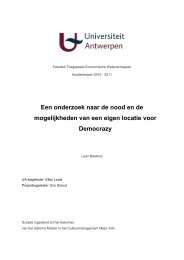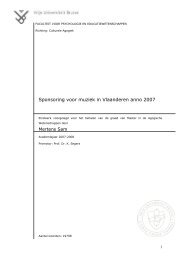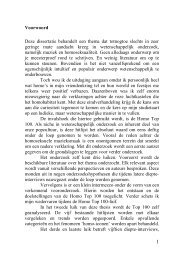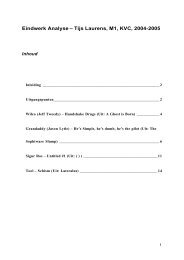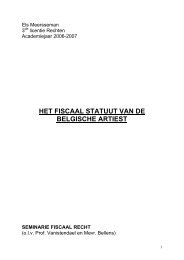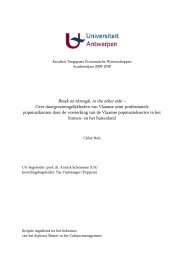Hip hop identity in a township reality. - Poppunt
Hip hop identity in a township reality. - Poppunt
Hip hop identity in a township reality. - Poppunt
Create successful ePaper yourself
Turn your PDF publications into a flip-book with our unique Google optimized e-Paper software.
“(…) The first groups that were MC’<strong>in</strong>g over here <strong>in</strong> Cape Town were like b-<br />
boys / [they would] just rapp<strong>in</strong>g other people’s rhymes from the States that<br />
were [chanted] and they were breakdanc<strong>in</strong>g too / and then from that day they<br />
started writ<strong>in</strong>g their own lyrics / (…) / so a lot of the people who were <strong>in</strong>volved<br />
with breakdanc<strong>in</strong>g became the first rappers.” (Emile YX?)<br />
The first rap groups were only formed a couple of years later, between 1984 and<br />
1987 (Africasgateway) and also accord<strong>in</strong>g to Emile YX?:<br />
“That was the start of most of the like MC’s like around about ‘84-‘85 / and<br />
then the sign<strong>in</strong>g of the deals happened a bit later.”<br />
At that time, hip <strong>hop</strong> received no airplay on the South African radio stations, and<br />
performances rema<strong>in</strong>ed limited to local musical venues (Africasgateway), so it was a<br />
while before the music <strong>in</strong>dustry discovered hip <strong>hop</strong> as a genre.<br />
“And then the first group that actually started sign<strong>in</strong>g a deal was Prophets of<br />
da City / and they were the first <strong>in</strong> the whole of South Africa.”<br />
<strong>Hip</strong> <strong>hop</strong> at that time was predom<strong>in</strong>antly the occupation of coloured work<strong>in</strong>g-class<br />
youths liv<strong>in</strong>g <strong>in</strong> coloured <strong>township</strong>s (Badsha: 133) such as Mitchell’s Pla<strong>in</strong>, which is<br />
generally recognised as the orig<strong>in</strong>al breed<strong>in</strong>g ground of hip <strong>hop</strong> <strong>in</strong> Cape Town.<br />
Emile YX? <strong>in</strong>dicates two reasons for hip <strong>hop</strong> be<strong>in</strong>g so popular <strong>in</strong> his community.<br />
Firstly, he remembers how their parents listened to a lot of American music such as<br />
Motown. When hip <strong>hop</strong> groups used samples from these songs, they already felt a<br />
connection, as it was these songs their parents listened to. Secondly is the fact that<br />
<strong>in</strong> the Western Cape there exists a mixture of races, which is ma<strong>in</strong>ly the reason why<br />
it was so popular amongst the coloured community. Coloured people do not have a<br />
specific <strong>identity</strong> accord<strong>in</strong>g to him, which is also applicable to the people who<br />
created hip <strong>hop</strong> <strong>in</strong> America.<br />
“Identity with so called coloured people / they don’t really have a specific<br />
<strong>identity</strong> (…) / and that’s exactly the same th<strong>in</strong>g that happened with the people<br />
who created hip <strong>hop</strong> <strong>in</strong> America / ask somebody from the African and<br />
American descendant or Afro-American / they’ve very little knowledge about<br />
the African history / so it’s a very similar background.”<br />
To a large extent the Cape Flats fit <strong>in</strong>to the stereotype of a ghetto, similar to where<br />
hip <strong>hop</strong> orig<strong>in</strong>ated <strong>in</strong> America. In her article, Badsha gives an account of the<br />
context <strong>in</strong> which to situate this peculiar evolution <strong>in</strong> South African youth culture.<br />
In the follow<strong>in</strong>g quote she considers the consequences of the limitations the





